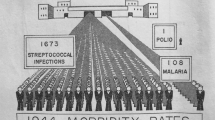Abstract
Background
Pasteur commented that if we could intervene in the antagonism observed between some bacteria, it would offer ‘perhaps the greatest hopes for therapeutics.’ Some Irish scientists were crucially involved in the eventual realization of these hopes.
Research
The earliest of these was John Tyndall, whose 1881 book, ‘Floating matter in the air in relation to putrefaction and infection,’ brought about general acceptance of Pasteur’s germ theory. Sir Almroth Wright, a TCD graduate, who discovered the first vaccine against typhoid fever, recruited Alexander Fleming to the London hospital where he discovered penicillin.
Sequence of events
This happened when Fleming was replicating an experiment originally carried out by Bigger, Boland and O’Meara in TCD. One of Fleming’s cultures was accidentally contaminated by a mould containing penicillin which came from the collection of Charles La Touche, an Irish mycologist who was researching whether cobwebs caused asthma in the same hospital, and who later taught in UCD.
Similar content being viewed by others
References
Waksman SA (1940) Scientific monthly, November
Royal Society Note by William Roberts, cited in Waksman SA (1975) The Antibiotic Era. The Waksman Foundation of Japan, Tokyo, p 13
See Eve AS, Creasey CH (1945) Life and work of John Tyndall. London, Macmillan; also Macmillan, N. D. and J. Meehan, (no date) John Tyndall, ‘X’emplar of Scientific and Technological Education. ETA Publications, Dublin
Oxford Dictionary of National Biography, entry John Tyndall
Schrödinger E (1945) What is Life?. Cambridge University Press. For evaluation, see Moore, Walter (1994) A life of Erwin Schrödinger. Cambridge University Press, Cambridge
Friday J (1974) Huxley and antibiosis in 1875. Br J Hist Sci 7:61–71
Crellin J (1980) In: Parascandola J (ed) The history of antibiotics: a symposium. American Institute of the History of Pharmacy, Madison, pp 5–14
Woodruff HB (1981) A soil microbiologist’s odyssey. Annu Rev Microbiol 35:7
Fleming A (1929) On the antibacterial action of cultures of Penicillium, with special reference to their use in the Isolation of B. influenzae. Br J Exp Pathol 10:226–236
Hare R (1982) New light on the history of penicillin. Med History 26:1
Hobby GL (1985) Penicillin: meeting the challenge. Yale Univ. Press, New Haven, p 46
MacFarlane G (1979) Howard Florey: the Making of a Great Scientist. Oxford University Press, Oxford
Rockefeller Foundation (1943) October. Extract from Trustees’ Bulletin
Chain EB (1980) In: Parascandola J (ed) The history of antibiotics: a symposium. American Institute of the History of Pharmacy, Madison, p 23
Chain EB, Florey H et al (1940) Penicillin as a chemotherapeutic agent. Lancet 24:226–228
Macfarlane, Note 12 above, p 190
Bud R makes this clear in his comprehensive Penicillin: Triumph and Tragedy (2007) Oxford University Press, Oxford
Williams TI (1984) Howard Florey: penicillin and after. Oxford University Press, Oxford, p 184
Waksman SA (1958) My life with the microbes. Robert Hale, London
Woodruff, Note 8 above, p 7
Waksman SA (1963) A most fruitful connection. Merck J, p 10
Schatz A, Bugie E, Waksman SE (1944) Streptomycin, a substance exhibiting antibiotic activity against Gram-positive and Gram-negative bacteria. Proc Soc Exp Biol Med 55:65–69
Kiple KF (Ed.) (1993) Cambridge World History of human disease. Cambridge University Press, Cambridge
MacFarlane G (1984) Alexander Fleming: the man and the myth. Chatto and Windus, London, p 76
Oxford Dictionary of National Biography, entry Almroth Wright
Brown K (2004) Penicillin man. Sutton Publishing, Stroud, pp 45, 109
Oxford Dictionary of National Biography, entry Alexander Fleming
Bigger JW, Boland CR, O’Meara RAQ (1927) ‘Variant colonies of Staphlococcus aureus’. J Pathol Bacteriol 30:261–268
Hare R (1970) The Birth of Penicillin, Chaps 3 and 4. George Allen and Unwin, London
Sir Richard Harris, cited in Heatley N (2004) Penicillin and luck. RCJT books, London. See also Bud, R., 1998. ‘Penicillin and the new Elizabethans’. Br J History Sci 31(Part 3):305–333
Brown, Note 26 above, p 9
Macfarlane, Note 24 above, p 138
Wilson D (1976) Penicillin in perspective. Faber and Faber, London, pp 251–256
Chain EB (1971) Thirty years of penicillin therapy. Proc R Soc Lond 179:293–319
Hobby, Note 11 above, pp 202–208. See also Bud, Note 17 above, pp 77–9
Sheehan JC (1982) The enchanted ring. M.I.T. Press, Boston
Stewart GT (1965) The penicillin group of drugs. Elsevier, London
Fleming felt that without Pryce’s persuasion, he would not have given the crucial petri dish a second look. Personal communication from Pryce to Brown, cited in Brown, Note 26 above, p 3 and Note 3, p 255
Heatley, Note 30 above, p 11
Waksman SA (1964) The conquest of tuberculosis. University of California Press, Berkeley, p 164
Waksman, Note 2 above, p 10
Waksman, Note 40 above, p 184
Author information
Authors and Affiliations
Corresponding author
Additional information
This is an expanded version of a lecture to the Royal Academy of Medicine in Ireland. Much of the author’s research on which it is based was published in Research Policy 29:679–710, (2000) and the Journal of the History of Medicine and Allied Sciences 59(3):441–462 (2004).
Rights and permissions
About this article
Cite this article
Kingston, W. Irish contributions to the origins of antibiotics. Ir J Med Sci 177, 87–92 (2008). https://doi.org/10.1007/s11845-008-0139-x
Received:
Accepted:
Published:
Issue Date:
DOI: https://doi.org/10.1007/s11845-008-0139-x




